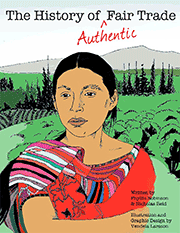By Nicholas Reid, Equal Exchange Sales Rep
 One of the best explanations of the rising cost of specialty coffee is simply the economics of supply and demand. At a time when demand for specialty coffee is growing, global production is failing to keep up, which has led to higher prices. However, exacerbating that situation and leading, in many cases, to a net decrease in production are the impacts of global climate change and very real changes in weather patterns.
One of the best explanations of the rising cost of specialty coffee is simply the economics of supply and demand. At a time when demand for specialty coffee is growing, global production is failing to keep up, which has led to higher prices. However, exacerbating that situation and leading, in many cases, to a net decrease in production are the impacts of global climate change and very real changes in weather patterns.
Specialty coffee, like many crops, requires certain conditions to thrive; ideally cool and stable temperatures between 60-75 degrees, an altitude between 3,000-6,000 feet, and clearly defined wet and dry seasons. A typical, or “ideal” cycle would include somewhere between 60-100 inches of rain over a nine-month rainy season, at the beginning of which the plants flower, pollinate and begin to develop cherries; and a three-month dry season, during which the cherries ripen and are harvested. Of course, agriculture is an inexact science; some regions have two harvests, but still follow an abbreviated period of wet and dry.
For the most part, across the vast swath of coffee-producing nations, farmers have enjoyed stable weather patterns and seasonalities. Of course, there have been exceptions; years when a single frost destroyed almost all the Brazilian crop; then too, international prices rose dramatically.
Recently however, it has not been singular, devastating anomalies in a specific region, but widespread and unpredictable changes to climate conditions and weather patterns. Many of our partners have reported lower-than-expected yields. During a visit to one of our partners, ASPROCAFE Ingruma, in the world-renowned coffee-producing department of Caldas, Colombia, in December of 2008, Todd Caspersen, our Director of Purchasing, reported on conditions there:
“The 2008 harvest began with the flowering of the coffee trees in February which would have provided a bountiful harvest eight months later but then the rain started and has not stopped since. Take a look at the internet and you will see stories of flooding, landslides and disastrously low harvest throughout Colombia. According to the meticulous records of Don Hernan Trujillo, Riosucio has only had 8 days of straight sun three times since February. This has resulted in extremely low harvests and lots of damage to the coffee farms. To put it simply: summer never came this year.”
That reality was echoed in recent New York Times article, “Heat Damages Colombia Coffee, Raising Prices” which blames high temperatures and heavy rainfall- 25% above average in the last few years- as the primary causes of the drastic decrease in production. Production in 2010 was 25% lower than in 2006. One farm they cited saw a 70% decrease in their 2010 harvest.
The farmers of KNCU, our partner in Tanzania, have relied on glacial melt from Mount Kilimanjaro for drinking water, and crop irrigation since 1933. However, higher temperatures in recent years have depleted the glaciers; the regional “reservoirs”. Not only are higher temperatures diminishing crop yields, but the declining water table is affecting farmers’ ability to irrigate their crops. Yields in the past years continue to decline, seriously impacting farmers’ incomes and economic development of the region.
The problem is not limited to coffee. Equal Exchange has been collaborating with our rooibos tea partners to mitigate the effects of climate change in Southern Africa. For the past few years, the farmers have been experiencing severe impacts from drought and higher temperatures, felt most acutely in the drier parts of the Kalahari where they farm. The delicate soil and water conditions in this area are being exacerbated by increasingly warmer temperatures. Rainfall patterns have also changed and the rooibos farm plots have suffered from high levels of degradation and mortality. These vulnerable lands have been affected by wind and water erosion, which threatens not only the livelihoods of the farmers, but also the long-term production of the lands.
As the world’s largest producer of greenhouse gases, it’s hard not to feel we Americans are somewhat responsible for the plight farmers are facing, and for declining yields. In that sense, paying higher prices for coffee doesn’t seem so unreasonable. And complaining about it- which I am wont to do- seems perfectly unreasonable, compared to what the producers are facing. If current trends continue, it will only get harder to source specialty coffee- there may not be coffee to purchase. The real question, for me, is are we doing enough? The future of coffee, and of millions of small-famers, depends on it.
On a brighter note, the farmers and co-ops we work with are deeply committed to facing climate change head-on. We are working with groups around the world to develop new methods of sustainable coffee production and agriculture in general. From reforestation projects in Nicaragua, and soil fertility in Mexico, organic fertilizer in Peru and Ecuador, we are working with farmer co-ops to not just expand production, but to do it better, and more efficiently. The continued support of Equal Exchange and our customers is ensuring sustainable and high-quality coffee for years to come.
To learn more about the rising price of coffee and the state of the coffee market, visit our website.



Leave a comment